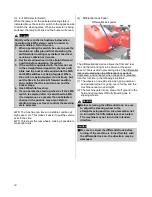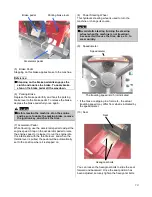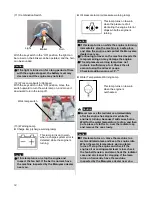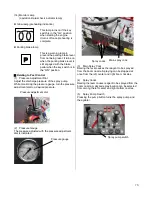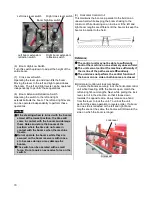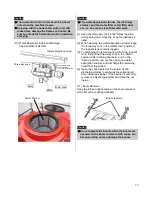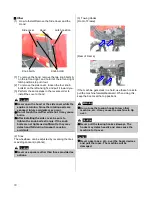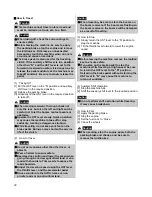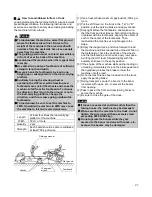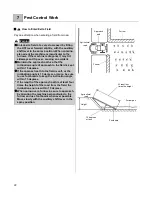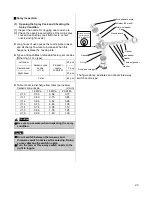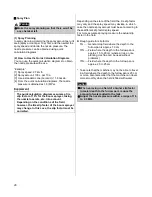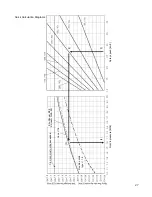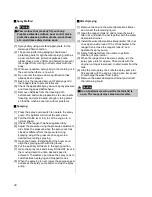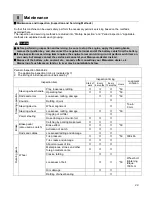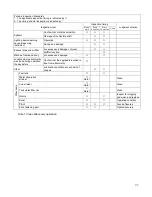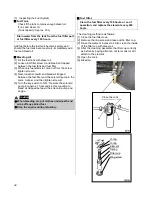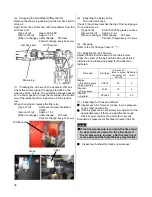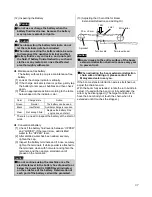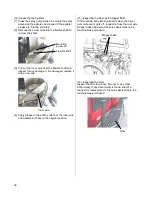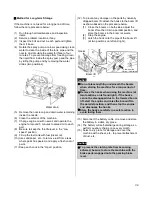
26
◼
Spray Plan
Warning
⚫
Make the spray planning so that there won
’t be
any chemical left.
(1) Spray Planning
In spray planning, determine the spray amount per unit
area (spray amount per 10 a) first, and then select the
spray speed and obtain the nozzle pressure. The
nozzle pressure can be obtained using quick
calculation diagrams.
(2) How to Use the Quick Calculation Diagrams
You can use the quick calculation diagrams to obtain
the nozzle pressure with ease.
“Example”
[1] Spray speed: 2.7 km/h
[2] Spray amount: 100 L per 10 a
[3] Use a standard cone (ceramic)
1.6 nozzle.
[4] From the quick calculation diagrams, the nozzle
pressure is obtained as 1.6 (MPa).
Supplement
The quick calculation diagram assumes a tire
slip factor of 10% for the boom sprayer, taking
the nozzle loss rate, etc. into account.
Depending on the conditions of the field,
however, the tire slip factor of the boom sprayer
may change. In this case, the slip factor must be
corrected.
Depending on the state of the field, the tire slip factor
may vary and the spray speed may deviate, in which
case the nozzle spray amount must be set according to
these different slip factor/spray speed.
For more accurate spraying measure the actual slip
factor in the field.
⚫
Rough guide for slip factor
5% --- General crop field where the depth to the
furrow pan is approx. 10 cm
10% --- Field where the depth to the furrow pan is
approx. 15 to 20 cm (where a ride-on rice
planting machine can be used without
problems)
15% --- Field where the depth to the furrow pan is
approx. 20 to 25 cm
* Take note that the machine may not be able to travel
in a field where the depth to the furrow pan is 25 cm
or more. Also remember that the machine can travel
more smoothly when the field is filled with water.
Caution
⚫
When spraying in a field of a higher slip factor
(greater depth to the furrow pan), reduce the
amount of water added to the tank.
⚫
Adjust the nozzle pressure within a range of 1.0
to 2.5 MPa.

